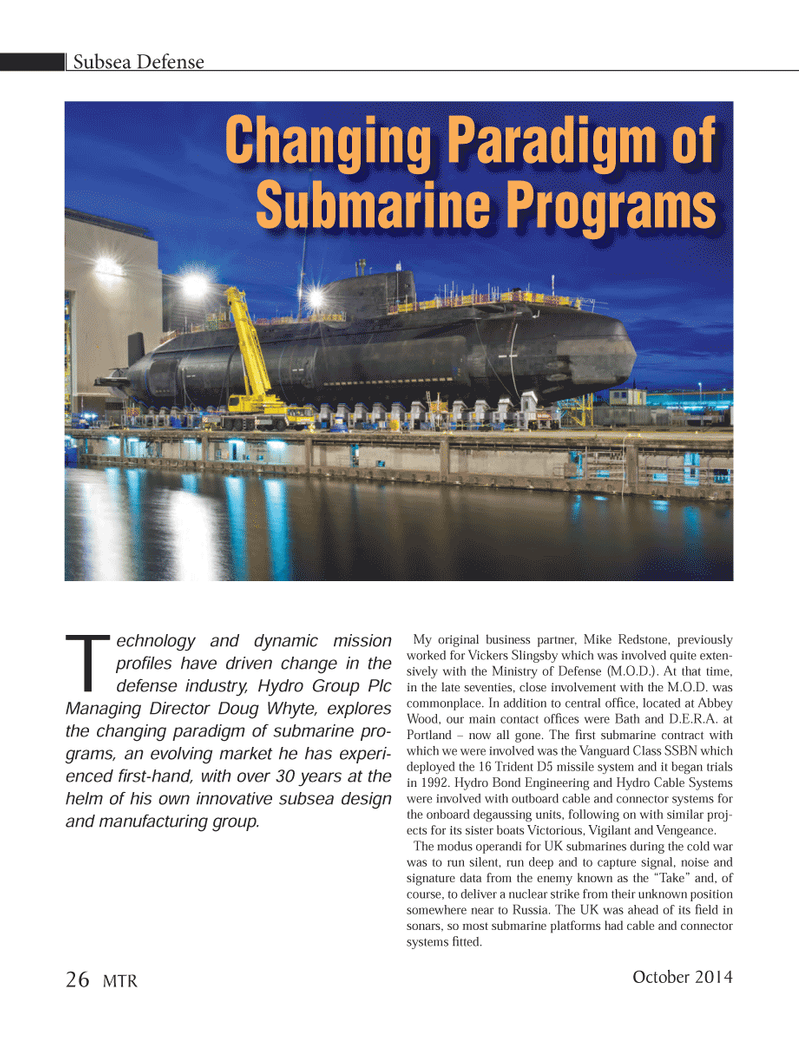
Page 26: of Marine Technology Magazine (October 2014)
Subsea Defense
Read this page in Pdf, Flash or Html5 edition of October 2014 Marine Technology Magazine
Technology and dynamic mission proÞ les have driven change in the defense industry, Hydro Group Plc Managing Director Doug Whyte, explores the changing paradigm of submarine pro- grams, an evolving market he has experi- enced Þ rst-hand, with over 30 years at the helm of his own innovative subsea design and manufacturing group. My original business partner, Mike Redstone, previously worked for Vickers Slingsby which was involved quite exten- sively with the Ministry of Defense (M.O.D.). At that time, in the late seventies, close involvement with the M.O.D. was commonplace. In addition to central ofÞ ce, located at Abbey Wood, our main contact ofÞ ces were Bath and D.E.R.A. at Portland Ð now all gone. The Þ rst submarine contract with which we were involved was the Vanguard Class SSBN which deployed the 16 Trident D5 missile system and it began trials in 1992. Hydro Bond Engineering and Hydro Cable Systems were involved with outboard cable and connector systems for the onboard degaussing units, following on with similar proj- ects for its sister boats Victorious, Vigilant and Vengeance. The modus operandi for UK submarines during the cold war was to run silent, run deep and to capture signal, noise and signature data from the enemy known as the ÒTakeÓ and, of course, to deliver a nuclear strike from their unknown position somewhere near to Russia. The UK was ahead of its Þ eld in sonars, so most submarine platforms had cable and connector systems Þ tted. Subsea Defense Changing Paradigm of Submarine Programs26 MTROctober 2014MTR #8 (18-33).indd 26MTR #8 (18-33).indd 2610/10/2014 1:51:11 PM10/10/2014 1:51:11 PM

 25
25

 27
27
